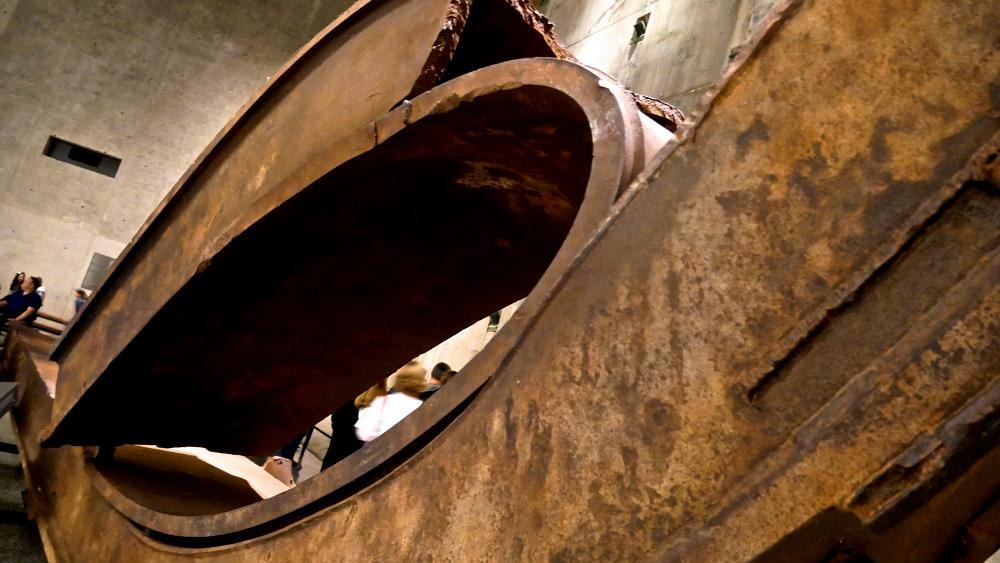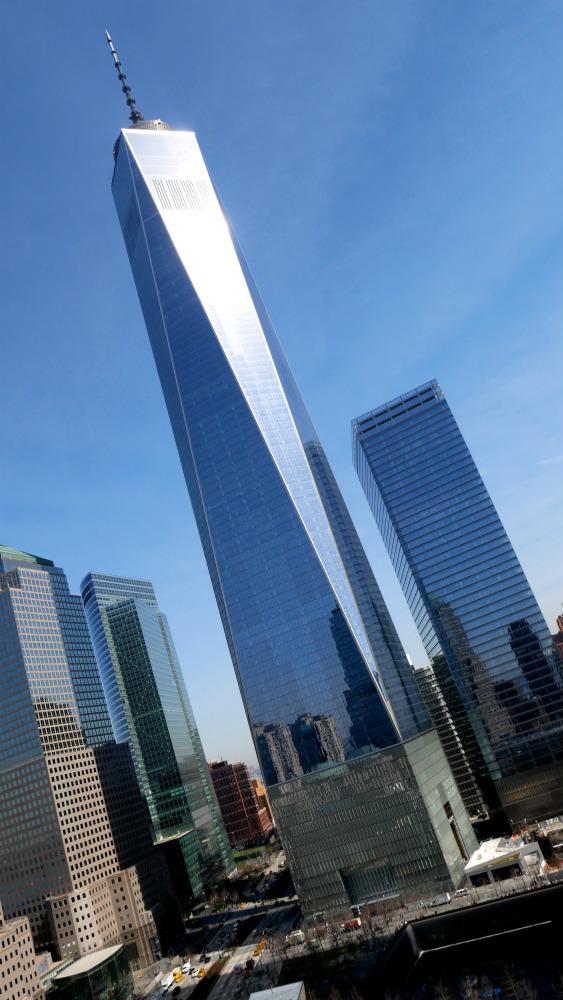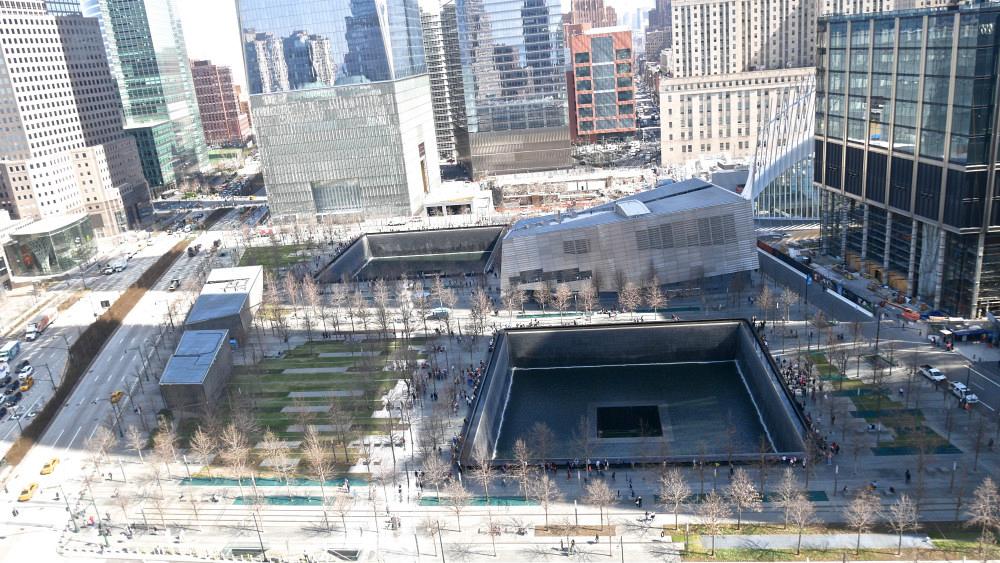Owner, Brown Dog Welding
- FMA
- The Fabricator
- FABTECH
- Canadian Metalworking
Categories
- Additive Manufacturing
- Aluminum Welding
- Arc Welding
- Assembly and Joining
- Automation and Robotics
- Bending and Forming
- Consumables
- Cutting and Weld Prep
- Electric Vehicles
- En Español
- Finishing
- Hydroforming
- Laser Cutting
- Laser Welding
- Machining
- Manufacturing Software
- Materials Handling
- Metals/Materials
- Oxyfuel Cutting
- Plasma Cutting
- Power Tools
- Punching and Other Holemaking
- Roll Forming
- Safety
- Sawing
- Shearing
- Shop Management
- Testing and Measuring
- Tube and Pipe Fabrication
- Tube and Pipe Production
- Waterjet Cutting
Industry Directory
Webcasts
Podcasts
FAB 40
Advertise
Subscribe
Account Login
Search
Creating a lasting memorial
Shock, awe, and reverence
- By Josh Welton
- May 26, 2017
“One of the worst days in America’s history saw some of the bravest acts in Americans’ history. We’ll always honor the heroes of 9/11. And here at this hallowed place, we pledge that we will never forget their sacrifice.”—President George W. Bush at the Pentagon in 2008
Recently I took a road trip, a quick jaunt from Detroit to New York City and back spanning just over two days. Leading up to the New York International Auto Show was an incredible amount of hype and built-up anticipation over a car that Dodge and SRT were going to unveil. It was to be a hopped-up version of the Challenger Hellcat, which already held the title of the most powerful production muscle car ever by pushing 707 HP.
The “Demon,” as this latest iteration is named, was unveiled on the eve of the auto show on Pier 94, just outside of Hell’s Kitchen, on the Hudson River. It was an event I was looking forward to attending, and Dodge tossed me the keys to a 2017 Challenger T/A to cover the 1,400-mile round trip.
Originally, the plan was to leave for New York Tuesday morning, attend the Demon’s reveal that night, then drive home to Detroit on Wednesday. That changed when my friend Mark Trostle, the head of design for Dodge/SRT, mentioned to me that he and a couple of his design guys were going to visit the 9/11 Memorial and Museum.
As it turns out, we were staying near Ground Zero where the twin towers were destroyed and so many lives were lost in the terrorist attacks of 2001. I’d heard about the memorial, but had yet to see it. I changed my itinerary.
So, Monday night I set out in an easterly direction and put down close to 400 miles before stopping in Pennsylvania to sleep. Then it was an early rise and enjoyable cruise into Lower Manhattan with a midmorning arrival.
We met up for a late breakfast at a rooftop terrace restaurant that overlooked the site. One World Trade Center loomed large on the opposite side, and two sunken, square pools sat below us in the footprint of the twin towers. We looked down where we once would have looked up, to where the towers once rose tall and proud and made the NYC skyline perhaps the most iconic of all time.
“Reflecting Absence,” as the memorial’s design is called, was nicely executed. Though obviously not as deep as the towers were tall, the pools are a literal, inverse reflection of the towers. At ground level water flows inwardly then drops off an edge, forming the largest man-made waterfalls in the country. There’s a square space in the middle of the sunken pool where the water again drops, this time out of sight. It was very clever to use the water as an insulator; the waterfalls capture the city’s noise and in its place effect a sense of calm.
Around each of the twin pools are bronze plates forming a barrier, or a parapet. On 152 plates total, 76 at each pool, the names of nearly 3,000 victims were cut by waterjet into the ½-in. material.
The entrance to the museum is at a pavilion between the two pools. Sections of large structural beams, the twin tridents, rise from the museum’s floor up above the ground level and into the pavilion. Immediately you get an idea of scale, as the giant seven-story sections are just a small part of the 110-story south tower.
None of us were prepared for the sense of gravity the museum dealt. There were no punches pulled, as audio from 911 calls echoed through some exhibits, while newscasts and amateur videos played in others. One side of the North Cathedral was a surviving slurry wall, which kept the Hudson River at bay during the Trade Center’s construction and also held up during the collapse, averting a major flood.
Another wall was the barrier of a repository, where the remains of unidentified victims are buried. Some pieces showed the immense forces that worked on the buildings as they came down, like a section of an I-beam contorted and torn. Others showed the resiliency of the rescue crews, like the “Last Column” covered with notes scrawled from police and fire departments and volunteer groups, and also photos of friends and family still missing.
After the 9/11 attacks, after the rescue attempts ceased and the demolition stopped, much criticism was directed at the people tasked with rebuilding the Trade Center and creating a memorial for everyone who lost their lives that day. It wasn’t happening fast enough, or it was costing too much money, or it was too flashy, or it didn’t convey the level of resilience New York City and the United States had. It’s very easy to look at a project from your personal perspective. It’s very difficult to imagine it through the eyes of thousands of souls; assimilate all their feelings and beliefs and the feelings and beliefs of everyone who cared for them; and then create something to honor each of them that also stands as a symbol of strength for an entire country.
That place—just being there, taking it in, breathing it in—has stayed with me. The fight, the sorrow, the exhaustion, the camaraderie, the terror, the bravery, the blood, the anger, the desperation, and the fortitude. Ghosts. I think the memorial and museum both tell a story:
Who we are survives.
All images courtesy of Josh Welton, Brown Dog Welding.
subscribe now

The Welder, formerly known as Practical Welding Today, is a showcase of the real people who make the products we use and work with every day. This magazine has served the welding community in North America well for more than 20 years.
start your free subscriptionAbout the Author

About the Publication
- Stay connected from anywhere

Easily access valuable industry resources now with full access to the digital edition of The Fabricator.

Easily access valuable industry resources now with full access to the digital edition of The Welder.

Easily access valuable industry resources now with full access to the digital edition of The Tube and Pipe Journal.
- Podcasting
- Podcast:
- The Fabricator Podcast
- Published:
- 04/16/2024
- Running Time:
- 63:29
In this episode of The Fabricator Podcast, Caleb Chamberlain, co-founder and CEO of OSH Cut, discusses his company’s...
- Trending Articles
Sheffield Forgemasters makes global leap in welding technology

ESAB unveils Texas facility renovation

Engine-driven welding machines include integrated air compressors

How welders can stay safe during grinding

The impact of sine and square waves in aluminum AC welding, Part I

- Industry Events
16th Annual Safety Conference
- April 30 - May 1, 2024
- Elgin,
Pipe and Tube Conference
- May 21 - 22, 2024
- Omaha, NE
World-Class Roll Forming Workshop
- June 5 - 6, 2024
- Louisville, KY
Advanced Laser Application Workshop
- June 25 - 27, 2024
- Novi, MI





























